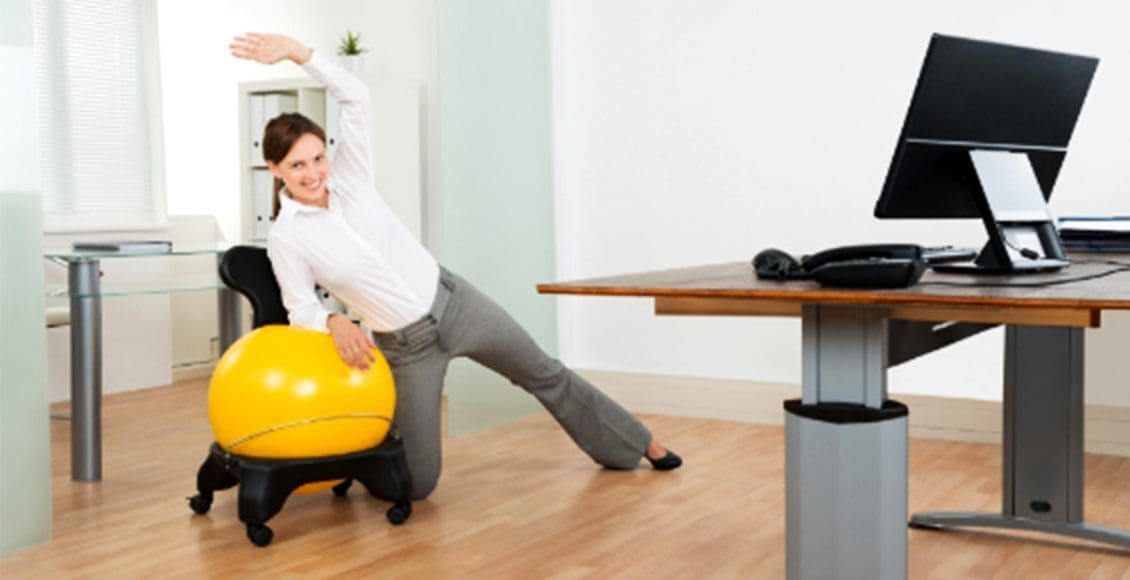If you sit behind a desk all day with little or no activity, you could be compromising your physical health, mental health, and brain health which could impact your productivity at work. From a physical standpoint, it isn’t healthy to remain in one position for too long. It can lead to various health conditions including diabetes, heart disease, and even cancer. Experts advise movement. By getting up and walking around every hour or so or do exercises at your desk.
Healthy brain function can be impacted by inactivity if you sit at work without moving for long periods of time your brain could suffer. The lack of activity could cause it to enter into a state of slumber which can lead to a decrease in brain processing speed and short-term memory loss.
It can also impact a person’s ability to learn or retain new information. It is so important to create an organizational culture that encourages moving around as part of their workday.
There are four areas where you can incorporate movement into your workplace: policies, places, people, and permission.
Table of Contents
Movement Policies
Create written policies that encourage and advocate movement during work hours. Incorporate moving workstations, moving meetings, flexible scheduling, more breaks when meetings run long, and a movement-friendly dress code.
Provide information and training to all employees and leadership underlining the importance of the policies and explaining the importance of movement as well as what they can do to support the initiative.
Places

Create workspaces that are conducive to movement, adjusting workstations so that they encourage active movement and incorporating dynamic change into current processes and workflows while minimizing the time employees spend sitting.
Seek out software and applications that encourage users to stretch or get up and move while they are working. Make stairwells more accessible and appealing, improve common areas, and promote collaboration that requires moving to various workstations or common areas.
People
Identify employees who are good role models for movement and train them for leadership roles so that they can encourage other employees to move a part of their workday. Train them in the policies regarding movement and task them with helping to create a culture of health and mobility within the organization.
Organize groups to walk during breaks or meet in common areas for light stretching and other types of movement. Sponsor contests and competitions with prizes for employees who achieve set goals.
Permission
Educate all employees and all levels of management or leadership on the benefits of movement and how it can positively impact personal production and performance as well as organizational outcomes. Stress that moving during the work day should become a regular activity and must be welcomed and allowed. Emphasize that it is the task of all employees to make a culture of movement the norm as opposed to the exception.
The benefits of moving around in the workplace extend far beyond healthier employees and increased production. Employees perceive themselves as valuable to the organization and morale is increased. Employee engagement improves on the job, and they invest more in their work as opposed to just doing a job. They are happier, empowered, and more productive at work and take more of an active role in business outcomes as well as their health.
Of course, employees will also enjoy individual benefits such as increased blood flow, as well as improved problem solving, better alertness, and enhanced creativity. A workplace that incorporates movement into its culture is a healthier, happier place to work with more robust, and more satisfied employees. You can’t afford to not implement this simple, effective strategy into your own organizational culture.
Labral Tear Hip Treatment
Post Disclaimer
Professional Scope of Practice *
The information herein on "Incorporate Movement Into Your Workplace" is not intended to replace a one-on-one relationship with a qualified health care professional or licensed physician and is not medical advice. We encourage you to make healthcare decisions based on your research and partnership with a qualified healthcare professional.
Blog Information & Scope Discussions
Welcome to El Paso's Premier Wellness, Personal Injury Care Clinic & Wellness Blog, where Dr. Alex Jimenez, DC, FNP-C, a Multi-State board-certified Family Practice Nurse Practitioner (FNP-BC) and Chiropractor (DC), presents insights on how our multidisciplinary team is dedicated to holistic healing and personalized care. Our practice aligns with evidence-based treatment protocols inspired by integrative medicine principles, similar to those found on this site and our family practice-based chiromed.com site, focusing on restoring health naturally for patients of all ages.
Our areas of multidisciplinary practice include Wellness & Nutrition, Chronic Pain, Personal Injury, Auto Accident Care, Work Injuries, Back Injury, Low Back Pain, Neck Pain, Migraine Headaches, Sports Injuries, Severe Sciatica, Scoliosis, Complex Herniated Discs, Fibromyalgia, Chronic Pain, Complex Injuries, Stress Management, Functional Medicine Treatments, and in-scope care protocols.
Our information scope is multidisciplinary, focusing on musculoskeletal and physical medicine, wellness, contributing etiological viscerosomatic disturbances within clinical presentations, associated somato-visceral reflex clinical dynamics, subluxation complexes, sensitive health issues, and functional medicine articles, topics, and discussions.
We provide and present clinical collaboration with specialists from various disciplines. Each specialist is governed by their professional scope of practice and their jurisdiction of licensure. We use functional health & wellness protocols to treat and support care for musculoskeletal injuries or disorders.
Our videos, posts, topics, and insights address clinical matters and issues that are directly or indirectly related to our clinical scope of practice.
Our office has made a reasonable effort to provide supportive citations and has identified relevant research studies that support our posts. We provide copies of supporting research studies upon request to regulatory boards and the public.
We understand that we cover matters that require an additional explanation of how they may assist in a particular care plan or treatment protocol; therefore, to discuss the subject matter above further, please feel free to ask Dr. Alex Jimenez, DC, APRN, FNP-BC, or contact us at 915-850-0900.
We are here to help you and your family.
Blessings
Dr. Alex Jimenez DC, MSACP, APRN, FNP-BC*, CCST, IFMCP, CFMP, ATN
email: coach@elpasofunctionalmedicine.com
Multidisciplinary Licensing & Board Certifications:
Licensed as a Doctor of Chiropractic (DC) in Texas & New Mexico*
Texas DC License #: TX5807, Verified: TX5807
New Mexico DC License #: NM-DC2182, Verified: NM-DC2182
Multi-State Advanced Practice Registered Nurse (APRN*) in Texas & Multi-States
Multistate Compact APRN License by Endorsement (42 States)
Texas APRN License #: 1191402, Verified: 1191402 *
Florida APRN License #: 11043890, Verified: APRN11043890 *
License Verification Link: Nursys License Verifier
* Prescriptive Authority Authorized
ANCC FNP-BC: Board Certified Nurse Practitioner*
Compact Status: Multi-State License: Authorized to Practice in 40 States*
Graduate with Honors: ICHS: MSN-FNP (Family Nurse Practitioner Program)
Degree Granted. Master's in Family Practice MSN Diploma (Cum Laude)
Dr. Alex Jimenez, DC, APRN, FNP-BC*, CFMP, IFMCP, ATN, CCST
My Digital Business Card
RN: Registered Nurse
APRNP: Advanced Practice Registered Nurse
FNP: Family Practice Specialization
DC: Doctor of Chiropractic
CFMP: Certified Functional Medicine Provider
MSN-FNP: Master of Science in Family Practice Medicine
MSACP: Master of Science in Advanced Clinical Practice
IFMCP: Institute of Functional Medicine
CCST: Certified Chiropractic Spinal Trauma
ATN: Advanced Translational Neutrogenomics





 Again, We Welcome You.
Again, We Welcome You.
Comments are closed.